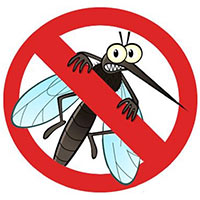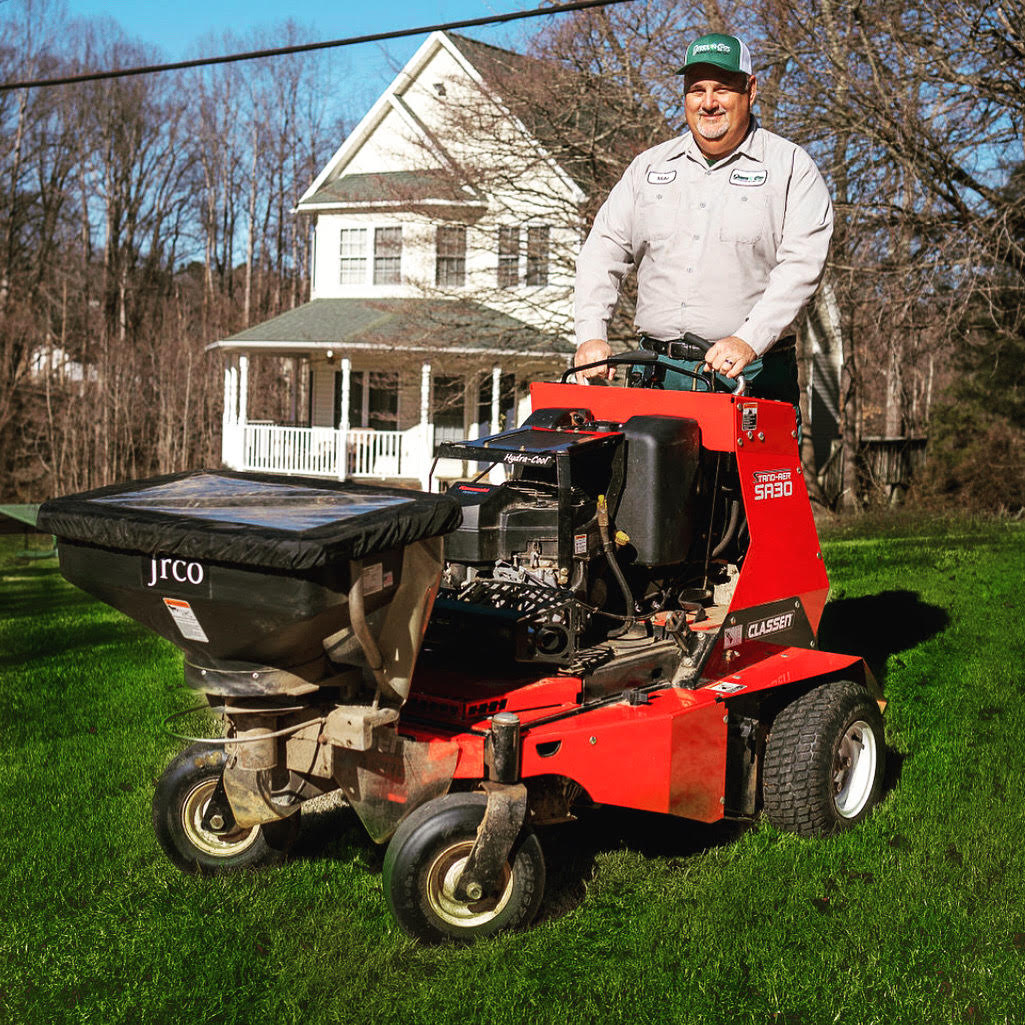North Carolina Lawn Care and Safety Tips
Understanding Your Turf Grass
 There are a multitude of grass brands but there are basically 2 types of grass: Cool Season type grasses and Warm Season type grasses. Cool season grasses such as fescue and bluegrass remain green throughout most of the year.
There are a multitude of grass brands but there are basically 2 types of grass: Cool Season type grasses and Warm Season type grasses. Cool season grasses such as fescue and bluegrass remain green throughout most of the year.
The exceptions are that they may go dormant with extremely hot weather and extremely cold weather. Warm Season grass types such as Zoysia, Bermuda, and Centipede can handle hot temperatures, but will go dormant and turn brown when cooler temperatures arrive.
The ABCs of Lawn Fertilization
Nitrogen aids growth, phosphorus is needed for root growth and vigor, and potassium helps increase plant metabolism and disease resistance.
Your lawn needs a balanced combination of these chemical elements to keep it healthy and strong. There are also a group of micro-nutrients, or trace elements that are included in commercial fertilizers. These trace micro-nutrients are essential for optimum grass growth.
Microbes ingest these chemical elements, process it through their digestive system and excrete it as soluble nutrients that can then be absorbed by the plants. Voila! Almost instant fertilizer. Well, not quite instant. Ever see how small a microbe is? That’s one reason why organic fertilizers take longer for results to show up in the lawn. It also means that results can be spotty. It’s very difficult to determine the number of microbes that exist in one lawn to the next. Some lawns may have an abundance of microbes and another lawn for whatever reason, may have substantially fewer microbes.
Proper fertilizing with balanced applications throughout the growing season promotes thick, dense grass that can resist disease and weed invasions. Applying too much of any one of the basic elements can cause erratic results. For example, an over abundance of nitrogen will cause rapid growth of the grass plants that the roots can’t adequately handle; the blades become long and spindly. Balance is the key.
Lawn Watering
Only water your lawn if it actually needs it. Turf grasses here in North Carolina typically need about 1″ of water each week during the growing season. This is a general rule and if it rains just 3/4″ that would be good. If it doesn’t rain one week and it rains an inch the following week, you should be good. If it doesn’t rain for several weeks, then you should consider watering your lawn.
If you do decide to water, water deeply to promote good root growth. Strong root systems create hardier turfgrass. Shallow watering evaporate before water is able to saturate the soil where it’s needed.
If you have an underground sprinkler system, keep it adjusted and well-maintained.
Don’t forget end-of-the-year maintenance to protect your hoses and watering system from possible winter freeze damage. Water expands as it freezes. At the end of the season drain hoses, water timers and sprinklers before the first frost. Store them where they won’t freeze.
Only water your lawn or garden when it needs it.
Mowing is a critical task that must be done on a regular basis. Mow at the recommended height for your type of turfgrass. Mowing too close causes stress, invites disease. Un-mown grass increases the chance of disease.
Remove thatch and aerate as needed to increase the soil’s water absorption.
Recommended Mowing Heights
| Turf Grass Variety | Mowing Height Range (inches) | Optimal Mowing Height (inches) | Normal Mowing Frequency (days) |
|---|---|---|---|
| Centipede Grass | 1.5-2.5 | 2.0 | 7-14 |
| Common Bermuda Grass | 1.0-3.0 | 1.5 | 3-7 |
| Hybrid Bermuda Grass | 0.75-2.0 | 1.0 | 3-7 |
| Tall Fescue | 2.0-4.0 | 2.5 | 7-14 |
| Zoysia japonica (coarse bladed Zoysia) | 1.0-2.5 | 1.5 | 7-10 |
| Zoysia matrella (fine bladed Zoysia) | 0.75-2.5 | 1.0 | 5-7 |
Safe Mowing Tips
Mowing the lawn is a weekly ritual for many Americans, but each year, nearly 80,000 Americans require a visit to an emergency room from injuries caused by a lawn mower. Most injuries are caused by flinging debris, such as rocks and branches after the mower’s blade strikes it. These injuries are most often inflicted upon children under the age of 15 or adults over 60.
- To avoid these needless injuries, keep a sharp eye out for anything visible in the lawn
- Don’t allow children under the age of 15 operate a power mower
- Keep younger children well away from a running mower
- Don’t rig up your mower to avoid built-in safety measures designed to protect the operator and others.
Mowing Tips for a Healthier, Better Looking Lawn
Mow grass to the proper height with a mower with a sharp blade. Never cut off more than one third of the blade when mowing. Grass needs the surface area of the blade to sustain itself. Removing too much of the blade creates an environment ripe for disease.
Additional mowing tips include:
- Don’t cut your grass too short, particular for cool season grasses. Higher heights usually provide for a deeper root system, looks better, and is less likely to have weeds invading, particularly crabgrass.
- Avoid mowing when the grass is wet or when it’s dark
- When mowing remove only a third with each cutting (except for the first mowing of the season when it’s OK to remove more). You can safely leave clippings that will quickly decompose and add nutrients back into the soil. Contrary to popular opinion, grass clippings do not add to thatch buildup. Grass blades are made up of about 75% water.
- Mow your lawn in a different direction with each mowing, especially with lawns of shorter grass types. Altering the direction ensures a more even cut since grass blades will grow more erect and less likely to develop into a set pattern.
- Keep your mower’s blade sharp, which means having it sharpened several times during the mowing season. Keep several blades around so you’ll always have a sharp one on hand.
- Don’t forget to change your mower’s oil at least once during the mowing season.
- At the end of the mowing season use a fuel stabilizer
- In the spring, don’t use that old gas unless you properly used a fuel stabilizer, it can cause a number of problems. Better to use fresh gasoline to begin the new mowing season.
Having a quality lawn involves providing a good soil, plenty of the right nutrients and quality lawn maintenance. This means that following sound lawn mowing techniques is an integral part of having a beautiful, healthy lawn.
Recommended Mowing Heights
| Turf Grass Variety | Mowing Height Range (inches) | Optimal Mowing Height (inches) | Normal Mowing Frequency (days) |
|---|---|---|---|
| Centipede Grass | 1.5-2.5 | 2.0 | 7-14 |
| Common Bermuda Grass | 1.0-3.0 | 1.5 | 3-7 |
| Hybrid Bermuda Grass | 0.75-2.0 | 1.0 | 3-7 |
| Tall Fescue | 2.0-4.0 | 2.5 | 7-14 |
| Zoysia japonica (coarse bladed Zoysia) | 1.0-2.5 | 1.5 | 7-10 |
| Zoysia matrella (fine bladed Zoysia) | 0.75-2.5 | 1.0 | 5-7 |

Lawn Care Programs

Mosquito Control
Aeration
We have a serious compaction problem with our North Carolina soil. Aeration helps reduce this compaction and keeps your soil in the best shape possible. That's why we include this important application step in our "All Inclusive Lawn Care Program."
Lawn Care Estimate
Use this form to request your free lawn estimate or call us today: (336) 306-9030



